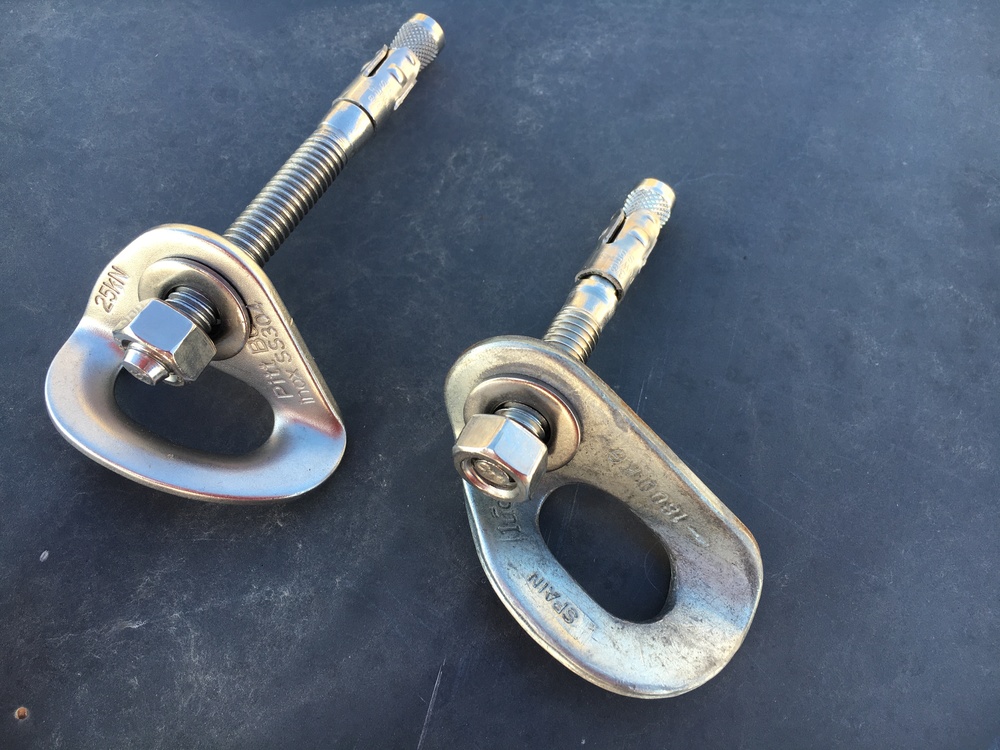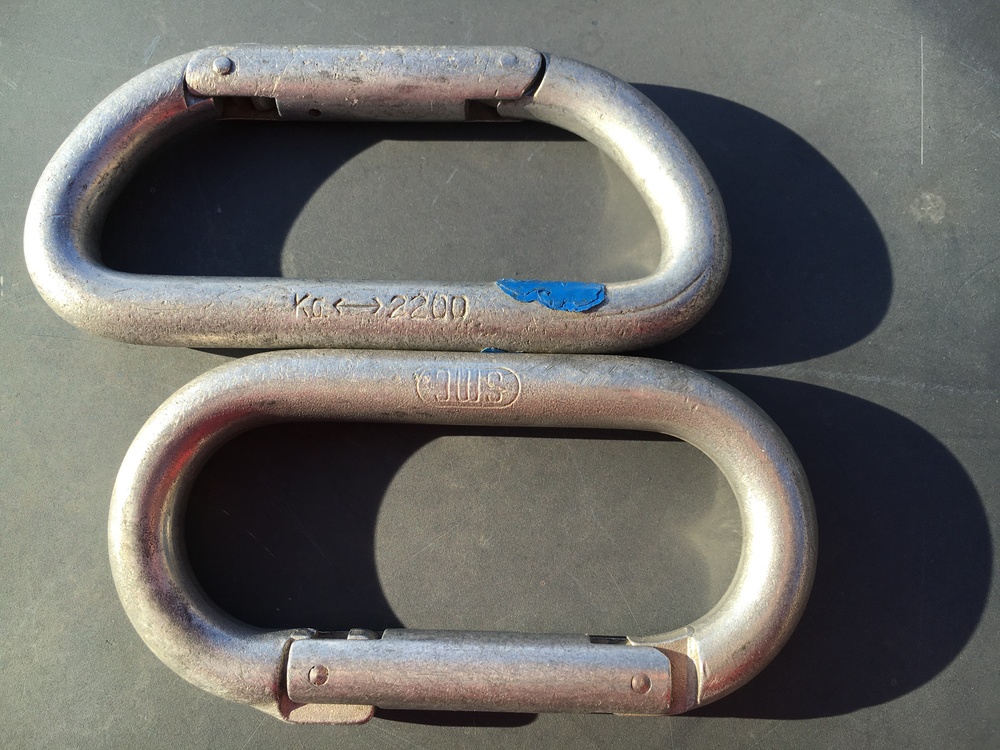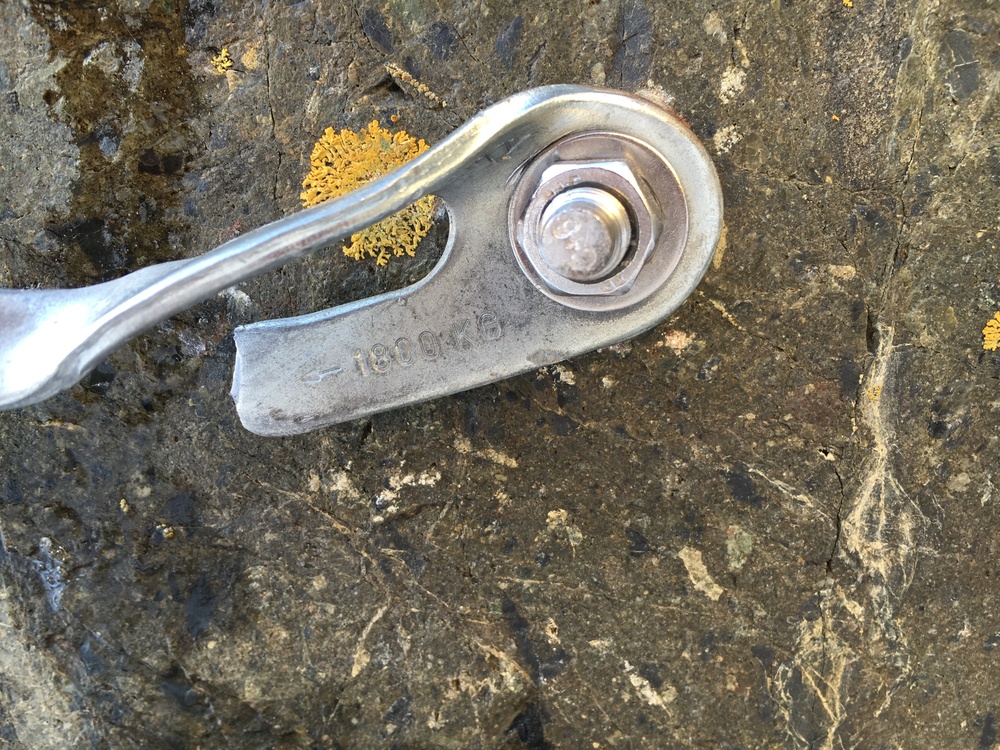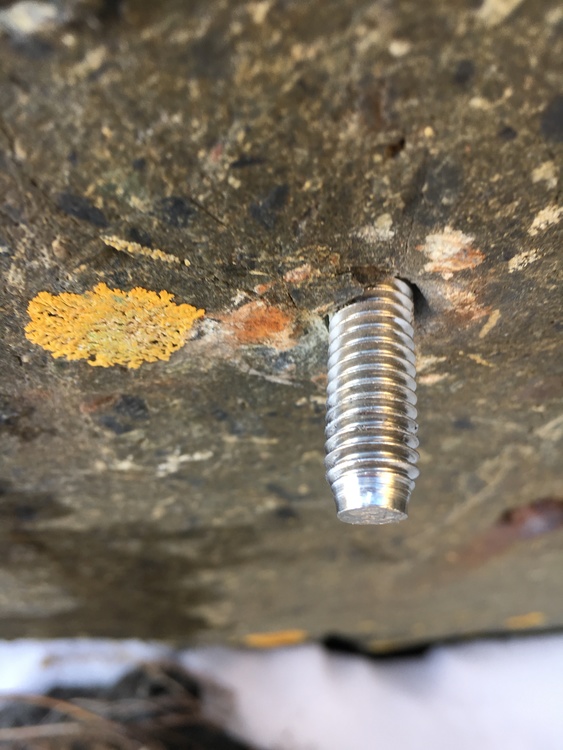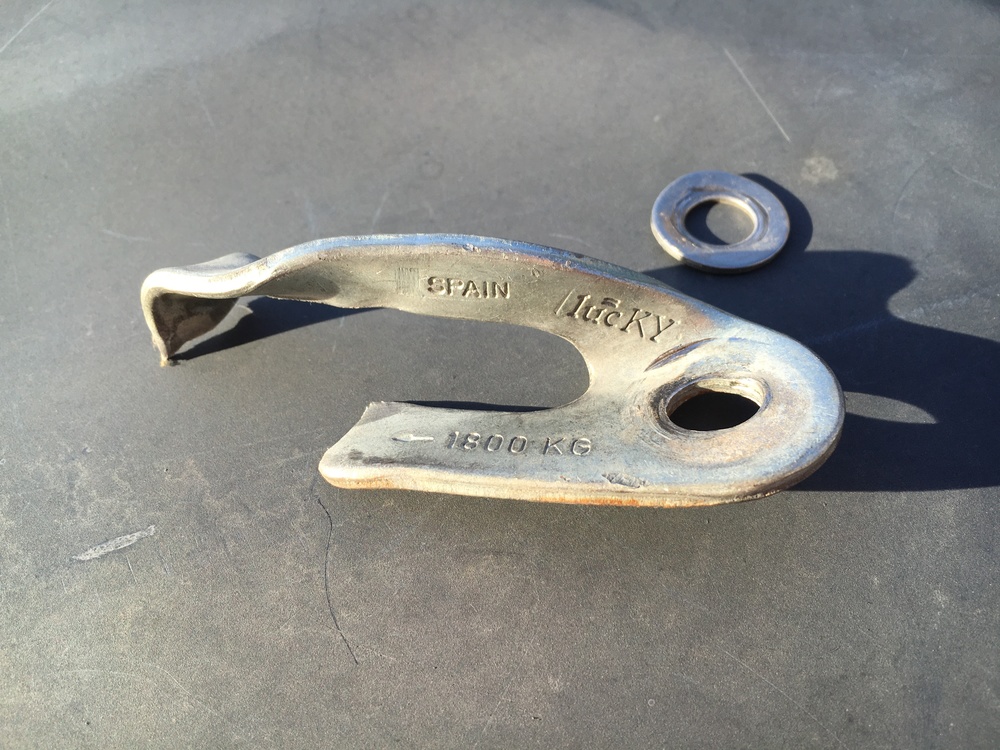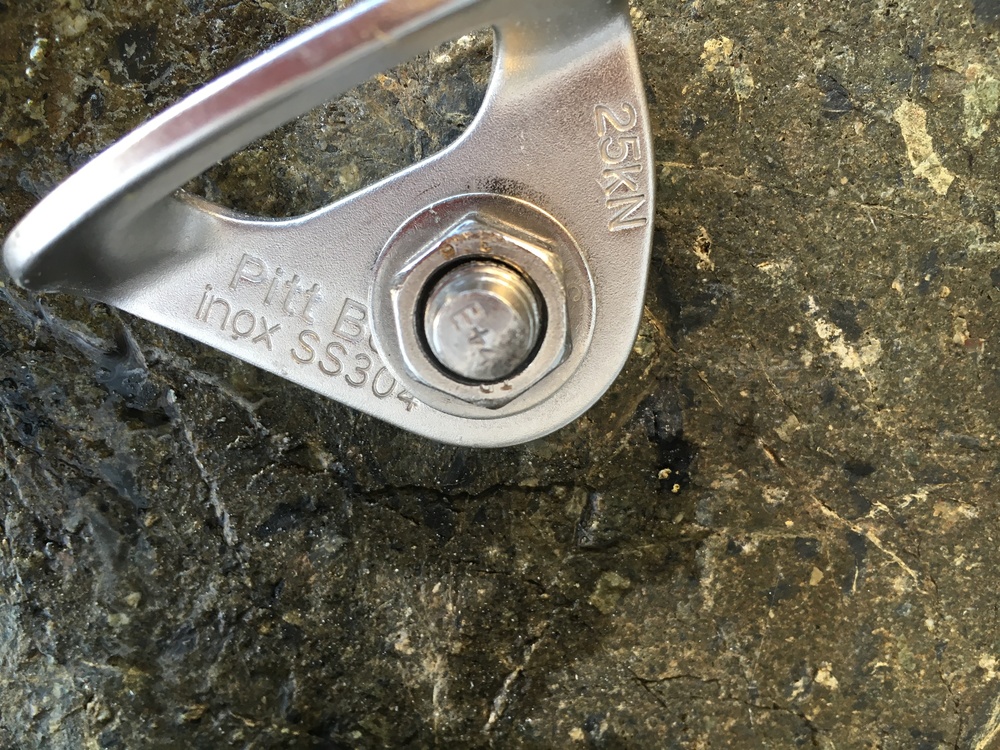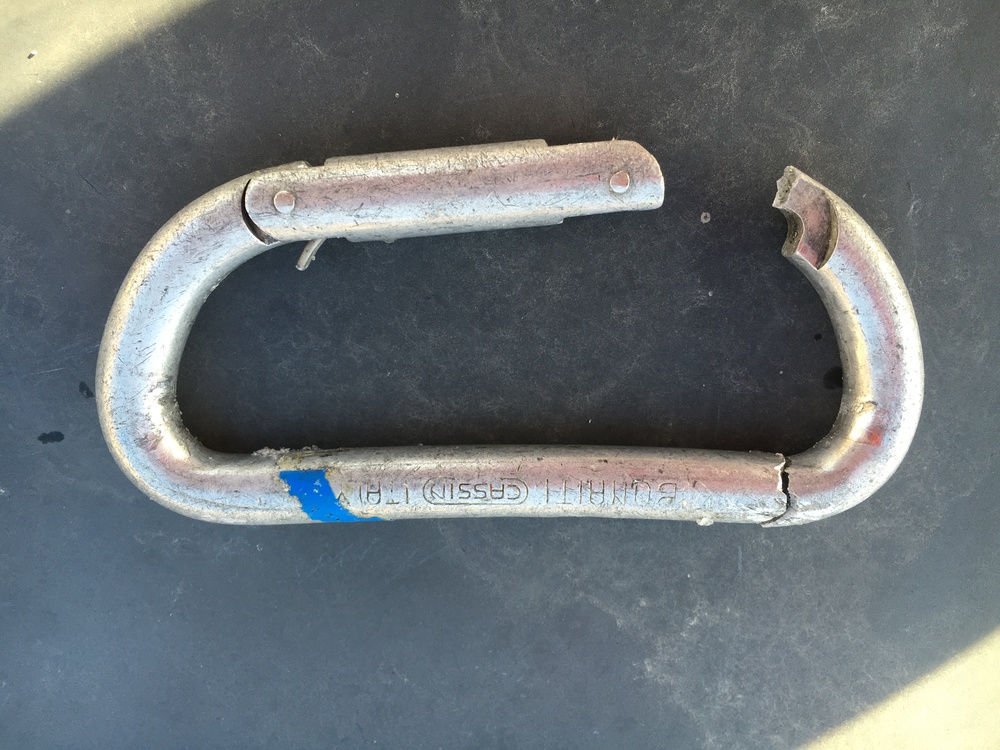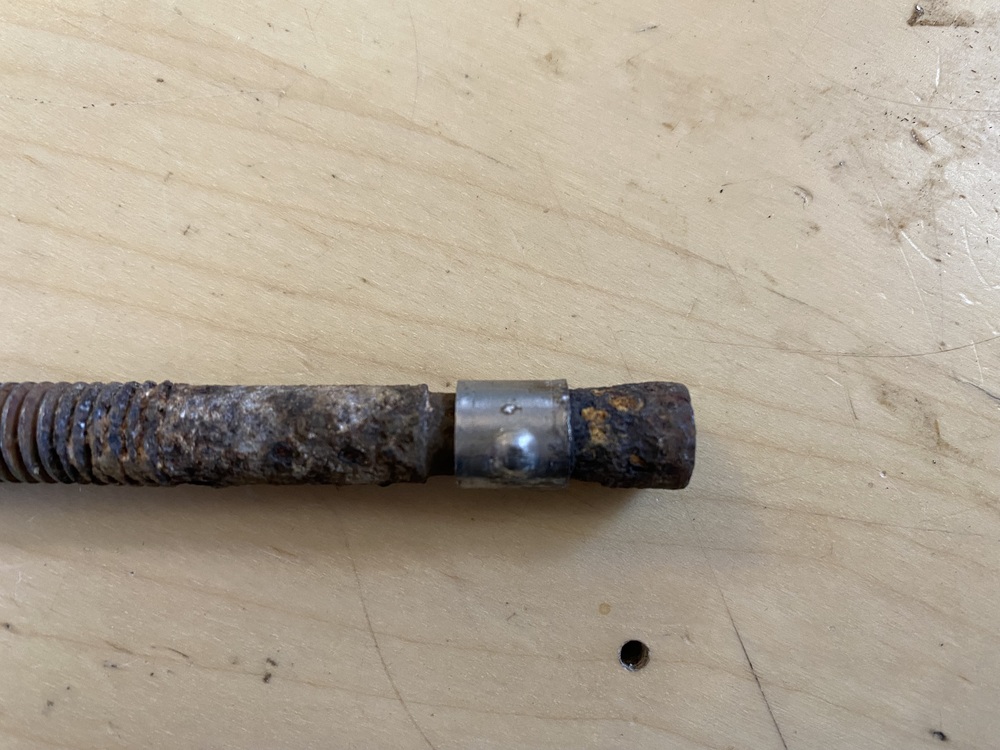Powers SD4 stainless wedge
|
|
the design strength is obviously going to be lower than the ultimate strength. you have to be really careful when comparing brochures from different bolt manufacturers. Usually there will be a bunch of different values for various types of strength. for example, for a different but somewhat similar application i am currently looking at a brochure for 316 stainless hilti kwik bolt TZ's that are 3/8" with 2" minimum effective depth. pulling up the tech info pdf, there is a ton of info. i always cringe a bit when people throw out strength numbers for various bolts because they are often not really comparing apples to apples. Section 3.3.5.2, second table, gives 5058 lbs for shear and 6519 lbs for "bolt fracture loads" Section 3.3.5 Table 15 gives values ranging from 2375 to 3680 lbs for shear and 1710 to 2650 lbs for tension for "design strength in uncracked concrete" (depending on concrete compressive strength). Section 3.3.5 Table 16 gives values ranging from 1685 to 2605 lbs for shear and 1520 to 2355 lbs for tension for "design strength in cracked concrete" (depending on concrete compressive strength). Section 3.3.5 Table 17 gives 3070 lbs for shear and 4475 lbs for tension for "steel strength" Then of course you have various factors for edge distance, spacing, and member thickness which at first you would think should have nothing to do with climbing installations, but after climbing a bizillion routes and seeing some really poorly chosen bolt locations...... but i won't even go into that. Then, on top of that - when various brochures list strength values they may not be consistently referring to the same format of strength calcs (ie LRFD/ASD/etc). Sooooo, at the end of the day - what is the appropriate number that folks should be looking at or referencing for comparison purposes? There isn't really one easy answer. Fracture (or ultimate loads) aren't really that great to use. Strength numbers are going to depend on the format of the strength calcs used, as well as the failure mode of the bolt (which may vary depending on rock type). Makes it hard to make simple comparisons. |
|
|
Yep, especially since manufacturers can (and do) change the bolts over the years, so the same bolt from different years may be different... |
|
|
I remember someone on this forum emailing Powers about the funky strength values. I can't find the specific posts anymore but the response was that Powers did their tests with shallow placements in 2500 psi concrete and then applied the strengths (conservatively) across the board. It would be interesting if someone were to test these in a climbing specific application. Seeing as Powers is a somewhat reputable fastener manufacturer and these anchors are designed to meet code for structural anchors in seismic areas, it wouldn't be surprising if they were considerably stronger than the values posted in the tables. I use the 3/8 x 2-3/4" SD4 for bolting in the back country and have been pleased with the bolts reliability in reaching the 25 ft-lb specified torque value (yes, I really do torque test my bolts in the backcountry). |
|
|
This all makes a ton of sense, but I wish it wasn't so ambiguous. I bought a box of 3/8" x 3 3/4" 304 SD4s for use in solid basalt before I realized that though the SKU was the same, these were not the same as the older PowerStuds I'd been using. Now I have a box of 50 bolts that I don't know if I should be using. I'd be pretty willing to just call it a loss if it was definitive these were no good, but based on the comparison of their information to the Hiltis which I've heard folks praise (see my image above), it seems really unclear that the Hilti meets a standard or that these don't. What a pain! |
|
|
Had a chance to give these bolts a proper shear test this weekend and got some really good, if informal, data. I tested two bolts, the first was a Power-stud+ SD6 (316 stainless) with an overall length of 2-3/4" and an effective embedment of 1-7/8". The second was a SD4 (304 ss) with a total length of 3-3/4" and an effective embedment of 3". These bolts were placed in good quality graywacke, (seafloor conglomerate/sandstone) with a compressive strength of 12,000-14,000 psi. These bolts were placed in accordance with Powers recommended cleaning procedures and torqued to 25 ft-lbs. For strength controls I used an old plated steel LucKY hanger rated to 1800 kg and an SMC oval on the short bolt. On the longer bolt I placed it with a cheap-o ClimbX hanger (supposedly rated to 25 kN) and pulled it with an old Bonaiti biner rated to 2200 kg. To test, the control biner was connected to the hanger and 5' length of 3/8" grade 80 transport chain. This was connected to the trailer hitch on my car via a 1/2" quick link. Below: Bolts prior to placement. Control biners. Short bolt placed. Short bolt tested. Stud post loading. Hanger failure. The first test resulted in hanger failure, no noticeable damage to the SMC oval and very slight bending of the bolt stud. I suspect the hanger failed close to its rated strength as the failure occurred at the bottom of the eye, which is usually the weakest point. Long bolt placed. Tested, biner failure. Considering the hanger and bolt deformation, I suspect the biner held at least its rated strength. These bolts tested considerably higher than the 12 kN shear strength listed on the spec sheet. The short bolt held at least 17.5 kN with no deformation, and the long bolt held around 21.5 kN with some deformation but no failure. The Powers SD4 is, in my opinion, suitable for use as a climbing anchor in good quality stone. As a side note, I was mildly surprised the ClimbX hanger did not fail below its rated strength and deformed with out any visible cracking. |
|
|
Nice test! |
|
|
Never placed one of these. But I have placed hundreds of Powers Power-Studs, 3/8 in. wedge bolts in hard granite. We've taken whipper after whipper on these things year after year. Do they really have a chance of breaking? Are the SD4s much different? Have there actually been bolt failures with sport climbers on a 3/8 in. wedge bolt with even hard factor 2 falls? Just curious... I'm all about safety and making certain I use quality bolts, but seriously, have they ever broken with a fall? Newer ones that aren't rusted and old anyway.. |
|
|
The topic of 3/8 Power-Stud bolts came up (again) in the deals thread. If it needs more discussion, maybe it belongs here instead. |
|
|
I'm loathe to make it as simple as 'they seem fine' but they kinda seem fine to me. Thanks for the link CD! |
|
|
CD Transporterwrote: It was unclear to me what they were talking about in the deals thread, because the SD4 is different than the SD6 is different than the PowerStud. Different strength ratings between them. |
|
|
Josh Zwrote: FYI, the SD 4/6 are the exact same design, however the 4 is 304 stainless, and the 6 is 316SS. |
|
|
Mr Rogerswrote: What makes it so confusing is they have the “DeWalt Power-Stud” “DeWalt Power-Stud + SD4” (304 SS) “DeWalt Power-Stud + SD6” (316 SS) In addition to those there are also the following which are not available in stainless steel: “DeWalt Power-Stud + SD1” “DeWalt Power-Stud + SD2” “DeWalt Power-Stud + HD5”
https://anchors.dewalt.com/anchors/anchors/products/mechanical-anchors/ |
|
|
Brian Rwrote: Absolutely correct, terribly confusing. |
|
|
Rolled threads are definitely stronger than cut ( machined ). |
|
|
SD2 is mixed metal? Is that ok? |
|
|
The ultimate load specs that they publish for the Power-Stud+ are all equally bad, regardless of if it is for the SD4 or SD6 or US or China. They all say that 3/8 is >20KN in tension and only 12.2KN in shear. That said, watch the video and also scroll up a bit in this thread to see the testing by C Williams. There is quite a mismatch between the published numbers and what the tests are actually seeing. |
|
|
climber patwrote: Yes, but not for climbing use. |
|
|
CD Transporterwrote: The normal Power-Stud in 3/8 is listed at 18.7kn in tension and 16.9kn in shear. Most things test higher than manufacturer...but larger manufacturer numbers do make me feel warm and fuzzy. |
|
|
climber patwrote: |
|
|
The published numbers being a bit lower than the average seems reasonable. What is weird is that the actual strength in shear is *so* much higher than the published number. In shear, HowNOT2 got these numbers and the testing by C Williams seems similar:
My best guess is that the low published shear numbers are not just related to the strength of the bolt, but are also related to wear and tear that would happen to the concrete in construction use. The sides of the bolt are not very well supported in the hole and the wedge cone is fairly small. The same things that make this bolt a poor choice for soft rock are probably causing them to publish low numbers for concrete. On the other hand, this doesn't completely explain the numbers for the non-plus version being so different (lower in tension and higher in shear than the plus version). If someone knows the real reason why the published shear number is so low, please share. Unless/until someone can explain why not, these do seem "super good enough" in good rock. |

 Continue with onX Maps
Continue with onX Maps Sign in with Facebook
Sign in with Facebook






















